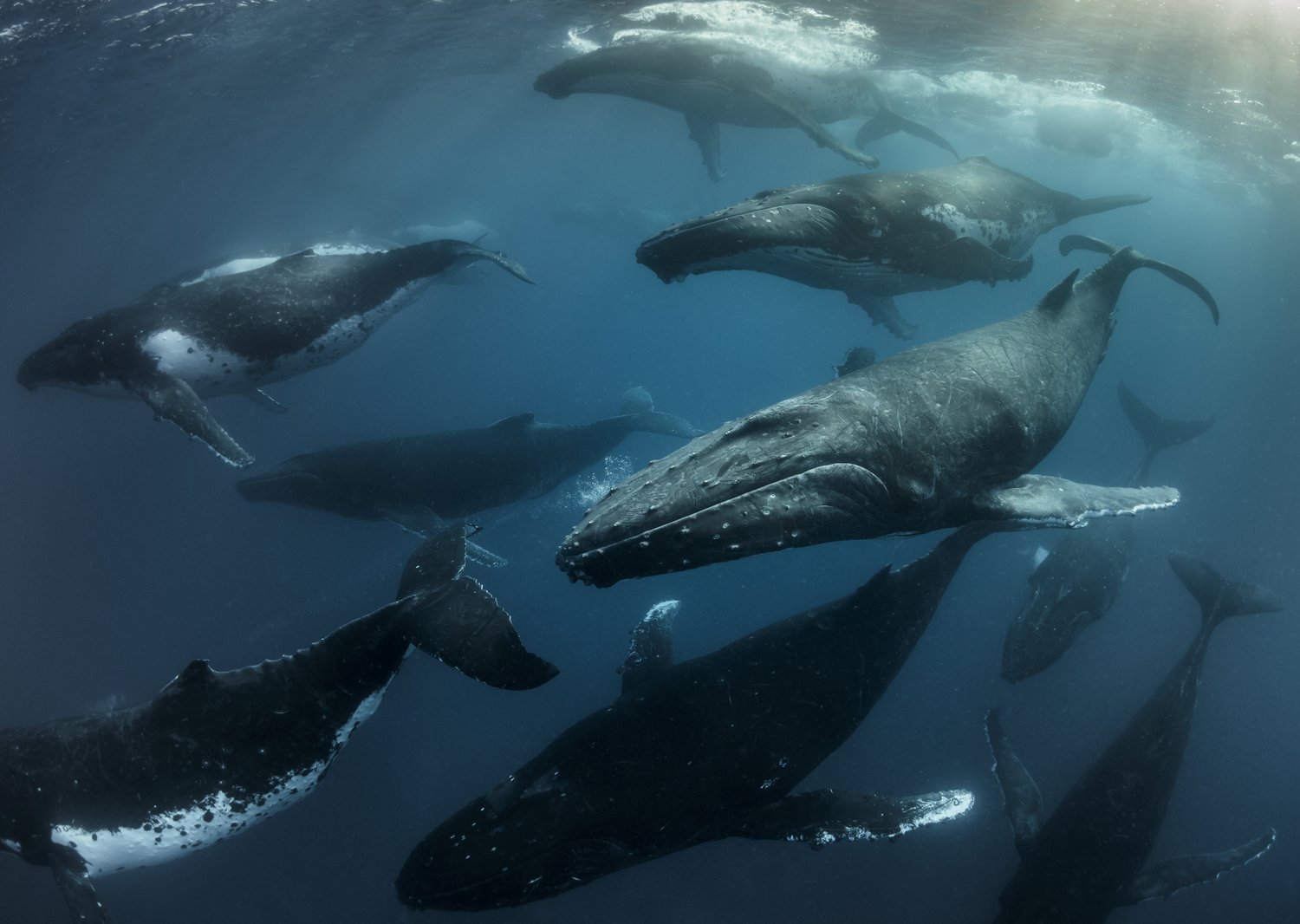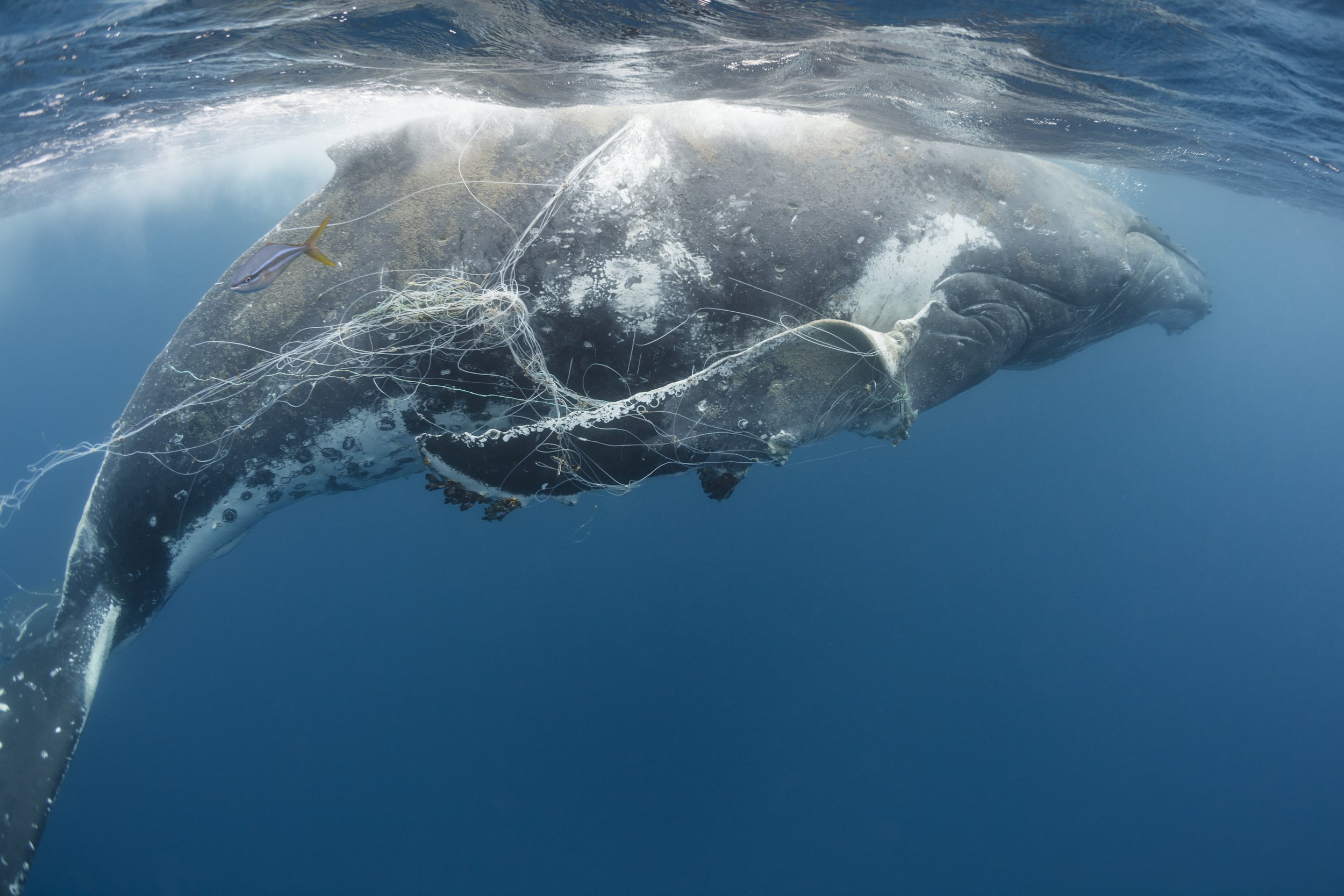
Humpback whales make some of the longest migrations on Earth. Along the coast of South America, scientists tracked one whale travelling 18,942 kilometres over 265 days, from its summer foraging area near the Antarctic Peninsula, up to its winter breeding area off Colombia and back to the Antarctic Peninsula.
Throughout the Southern Hemisphere, humpbacks make seasonal migrations like this between the tropics and polar waters, moving along the coasts through the waters of 28 countries and the open ocean that lies beyond the jurisdiction of any nation.
The growing dangers whales face worldwide along these epic journeys are signs of an unhealthy ocean, and reveal how it connects us all.

Whales are essential to a healthy ocean and planet
Along their migrations, whales fertilise the marine ecosystems they move through and support the marine life inhabiting them. Their faecal plumes boost phytoplankton production, which captures about 40 per cent of all carbon dioxide produced and generates over half of the atmosphere’s oxygen. When they die, whales sink to the seabed, taking massive amounts of carbon out of the atmosphere for centuries. Altogether, over its lifetime, one whale captures the same amount of carbon as thousands of trees.
This means that by restoring whale populations, we can help restore ocean ecosystems and mitigate and build resilience to climate change. It’s helping nature help itself, and all of us who depend on it.
Growing threats on ocean migrations
Despite the vital role they play in the health of our planet and our own lives, whales are facing a barrage of growing threats from human activity.
As many as 300,000 whales, dolphins, and porpoises are killed every year from entanglement in fishing gear. Ever-expanding shipping traffic is leading to more collisions between whales and ships and is more than doubling underwater noise pollution each decade. Climate change is shifting their prey populations, especially in the polar regions – making it harder for them to find food. Eight million tonnes of plastic are entering the sea every year: that’s about one full garbage truck every minute. New research shows whales near large cities ingest around three million microplastics per day.
These cumulative threats in our ocean are impacting the recovery and health of whale populations in different ways around the globe. While the moratorium on commercial whaling allowed some populations to recover from the brink of extinction, some have not. Six out of the 13 great whale species are now classified as Endangered or Vulnerable. North Atlantic right whales are at their lowest point in about 20 years, numbering only 366 individuals – a decline of 30 per cent over the past 10 years.

A humpback whale entangled entangled in longline fishing gear immobilizing both pectoral fins, and infested with Whale lice. Vava’u, Tonga, Pacific Ocean.

Blue whale killed by collision with container ship, Sri Lanka. Large wound was most likely the result of a direct strike from the bow of a large commercial vessel traveling in the major shipping lanes just south of Sri Lanka. These shipping lanes run directly through the feeding grounds of blue whales and other cetaceans. Photo taken under permit.

Mapping whale superhighways
For the first time, Protecting Blue Corridors, a new report by WWF and our science partners from Oregon State University, University of California Santa Cruz, University of Southampton, and many others, visualises the satellite tracks over 1,000 migratory whales worldwide. Importantly, it helps identify where migratory routes and key habitat areas overlap with a range of emerging and cumulative impacts, helping inform how we can better protect and manage their critical ocean habitats worldwide.
Time for action: protecting blue corridors for whales, our ocean, and ourselves
As our understanding of whales’ migratory routes and the threats they face evolve, our approach to conserve and restore whale populations across their entire range must also evolve. This World Whale Day, we call for collaboration between researchers, local communities, national and international policymakers, governments, and industry to protect blue corridors by:
-
Securing critical ocean habitats for whales
- We need to implement a comprehensive network of marine protected areas overlapping national and international waters to protect 30% of our ocean by 2030 (‘30×30’). This will help protect and conserve whales and many other species, while strengthening the ocean’s resilience to climate change. Of particular urgency is securing ambitious agreements on ocean protection at the UN Biodiversity Conference (COP 15) in Kunming later this year and a new UN treaty for the high seas (Biodiversity Beyond National Jurisdiction) in March, 2022.
-
Safeguarding populations through cooperative efforts
- Work to achieve ‘zero bycatch’ in fisheries in national and international waters
- Eliminate and clean up ‘ghost gear’ – abandoned, lost, or otherwise discarded fishing gear
- Establish an ambitious UN global treaty to stop the leakage of plastics into our ocean by 2030
- Move ships away from critical whale habitats where possible
- Set ship slow down rules and other measures to reduce underwater noise and risks of ship strikes
-
Investing in whales for a thriving ocean
- Integrate the vital ecological role of whales into global and national climate and biodiversity policies
- Support large-scale collaborative science to inform policy recommendations as part of the UN Decade of Ocean Science
Together, we can protect our ocean giants and make their epic journeys safer for years to come.








